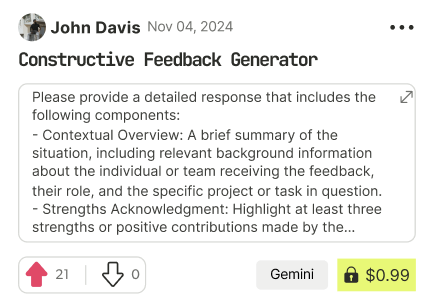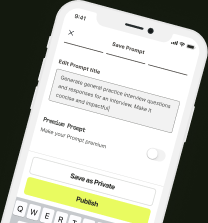prompt mine App
Find, Create & Share AI Magic
Adapting to a World with Part-Time Gravity
In a world where gravity only worked part-time, switching off for 6 hours each day, humans would have to adapt in extraordinary ways. The effects of this phenomenon would be far-reaching, influencing everything from home design and transportation to sports and social schedules. As people adjusted to this bizarre reality, they would develop innovative solutions to navigate the challenges and opportunities presented by a gravity that was only occasionally reliable.
Home Design and Architecture
Homes would need to be designed with the unique demands of part-time gravity in mind. Buildings would require specialized foundations and structural reinforcements to withstand the daily fluctuations in gravity. Walls and ceilings might be made of flexible, lightweight materials that could stretch and contract as needed. Furniture would be attached to the floor or designed with magnets to prevent it from floating away during the 6 hours of weightlessness. Some homes might even feature retractable ceilings or walls to create larger, open spaces during the gravity-free periods.
Transportation and Commuting
Commuting would become a surreal experience, with vehicles designed to operate in both gravity and weightlessness. Cars might be equipped with retractable wheels and magnetic levitation technology to allow for smooth transitions between grounded and floating travel. Public transportation systems would need to be redesigned, with buses and trains featuring specialized compartments to keep passengers safe during the weightless periods. Cycling and walking would also require innovative solutions, such as inflatable, pressurized suits that could provide buoyancy and protection during the gravity-free hours.
Sports and Leisure Activities
The absence of gravity for 6 hours a day would give rise to new and exciting sports. "Float-ball" would become a popular team sport, played with a ball that could be propelled and maneuvered in mid-air using specialized gloves and paddles. "Gravity-surfing" would involve riding the waves of gravitational force as they pulsed back to life, with surfers using advanced, flexible boards to navigate the turbulent flows. Other sports, like "zero-G gymnastics" and "weightless wrestling," would push the boundaries of human physicality and creativity.
Schedules and Social Routines
Daily routines would be drastically altered, with people adapting to the 6-hour cycles of gravity and weightlessness. Special schedules would be created to accommodate the different needs of each period. For example, most people would sleep during the grounded hours, while others might prefer to sleep during the weightless periods, using specialized, tethered beds to prevent floating away. Meal times would be adjusted to avoid the chaos of eating in zero-G, with most people opting for pre-prepared, easily consumable foods during the floating hours.
Surprising and Funny Scenarios
1. The Great Hair Disaster: During the first few weeks of the part-time gravity phenomenon, people would struggle to cope with the effects of weightlessness on their hair. Stylists would develop innovative, gravity-defying hairstyles, and hair accessories like magnetic headbands and zero-G hairnets would become all the rage.
2. Floating Frenzy: As people adjusted to the new reality, they would start to take advantage of the weightless periods to engage in all sorts of zany activities, like floating parties, zero-G yoga classes, and even "float-a-palooza" festivals, where participants would gather to enjoy music, food, and drinks while suspended in mid-air.
3. Gravity-Induced Traffic Jams: With vehicles switching between grounded and floating modes, traffic patterns would become increasingly complex. Drivers would need to navigate through "gravity lanes" and "weightless zones," leading to hilarious and chaotic scenes of cars and buses floating above or crashing into each other.
4. The Art of Zero-G Cooking: Chefs would need to develop new techniques for preparing meals in weightlessness, using specialized utensils and ingredients that could be manipulated in mid-air. Restaurants would offer "zero-G cuisine" experiences, where diners could enjoy meals while floating above their tables.
5. Gravity-Based Prank Wars: As people became more comfortable with the part-time gravity, they would start to play pranks on each other, taking advantage of the weightless periods to fill rooms with balloons, hide objects in mid-air, or even create "floating surprises" like unexpected showers of confetti or water.
In conclusion, a world with part-time gravity would be a realm of endless surprises, challenges, and creative opportunities. Humans would adapt, innovate, and thrive in this bizarre reality, giving rise to new forms of art, entertainment, and social interaction. As people learned to navigate the fluctuations in gravity, they would develop a deeper appreciation for the forces that shape their daily lives and the incredible possibilities that emerge when the ordinary rules of physics no longer apply.

Find Powerful AI Prompts
Discover, create, and customize prompts with different models, from ChatGPT to Gemini in seconds

Simple Yet Powerful
Start with an idea and use expert prompts to bring your vision to life!

